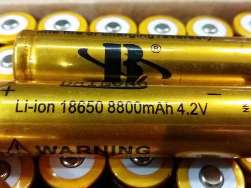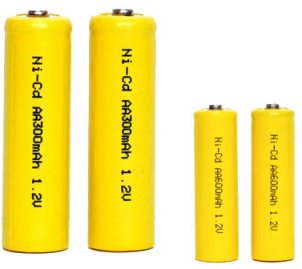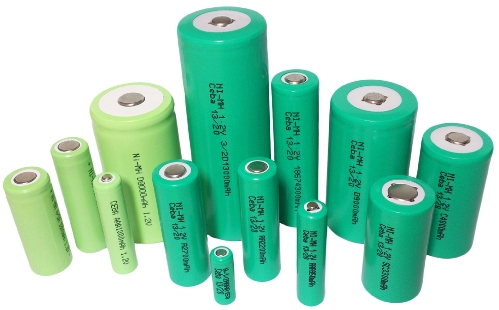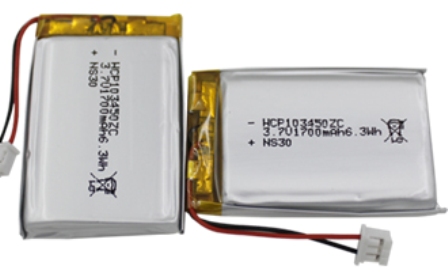Categories: Electrical Reviews
Number of views: 14671
Comments on the article: 6
Modern rechargeable batteries - advantages and disadvantages
 Every modern person, one way or another, uses electronic mobile devices in everyday life. These devices include both mobile phones, smartphones, tablets, laptops, players, and portable medical equipment such as blood glucose meters, and complex vital devices and prostheses that require autonomous power.
Every modern person, one way or another, uses electronic mobile devices in everyday life. These devices include both mobile phones, smartphones, tablets, laptops, players, and portable medical equipment such as blood glucose meters, and complex vital devices and prostheses that require autonomous power.
Obviously, the use of batteries today is very important. Not every gadget is conveniently plugged into an outlet every time, not everywhere the outlet is at hand, and sometimes it is just necessary to have an autonomous power supply, in particular in the field, the same flashlights are an ordinary but vivid example.
Thus, the main power source for portable devices is accumulator battery. If there is no battery, then the device simply will not be able to work, and cannot be used for its intended purpose. As a result, our life is gradually filled with batteries, large and small, capacious and not very, but at the same time, both the advantages and disadvantages of the batteries are preserved. We’ll talk about them.
In general, in order for the use of the battery in the device to be expedient and cost-effective, the device itself should not consume a lot of current. And if you add to this the small size of the device, then the large battery can not be placed in it. That is, the topic boils down to rechargeable batteries, which should ensure a long battery life of the device, and at the same time have small dimensions, and also withstand multiple cyclic recharging.
In this sense, the presence, for example, in smartphones, Wi-Fi, Bluetooth, and other additional options, leads to increased energy consumption, and the battery simply needs to be quite capacious. Quite powerful devices have small dimensions, and the battery should not be large. Of course, the price of such a convenient compact battery is high, but the purchase of a battery is definitely advisable.
There are currently four main types of rechargeable batteries that are used everywhere in a variety of gadgets (at various times): nickel-cadmium, nickel-metal hydride, lithium-ion and lithium-polymer batteries.

The most affordable today - nickel cadmium (NiCd) batteries. These batteries have long been used in portable technology, due to the large number of charge-discharge cycles, such a battery can be recharged up to 1000 times. However, nickel-cadmium batteries are very sensitive to temperature changes, they quickly lose their life if they are subjected to this test.
The presence of cadmium inside the battery requires a special approach to its disposal, which again is associated with additional loads on the consumer. In addition, nickel-cadmium batteries have a pronounced self-discharge and low specific energy consumption.
As a result, nickel-cadmium batteries are gradually leaving the wide market, but remain relevant for applications in freezing conditions, moreover, nickel-cadmium batteries have a long shelf life and do not ignite during depressurization.

Nickel Metal Hydride (NiMH) rechargeable batteries have more than 30% high specific energy consumption, in comparison with nickel-cadmium, but their charge-discharge resource is half as much. Although the nickel-metal hydride batteries are almost completely free of the “memory effect”, they cannot be stored in an uncharged state for more than a month - the capacity is still reduced.
You can store them fully charged, in the refrigerator, at zero degrees, while periodically recharging if the voltage drops below 1.37 in.Thus, nickel-metal hydride batteries are again not the best option for portable equipment.

Take a leading position lithium-ion (Li-ion) rechargeable batteries. They are today considered the most optimal solution for mobile phones and other mobile devices.
With small sizes, lithium ion batteries They have an energy consumption of up to 243 Wh per kg, which is just right for gadgets. The ability to quickly charge, the almost complete absence of a “memory effect", small size - what you need for rechargeable devices.

Popular today and lithium polymer (Li-pol) batteries. They have an even higher energy density than lithium-ion counterparts, can operate in a wide temperature range, and are completely devoid of the "memory effect".
A polymer-lithium-based battery can have a thickness of 1 mm, and is convenient to fit, for example, in a thin tablet, and completely different flexible forms of lithium-polymer rechargeable batteries are possible.
As a result, it is lithium-polymer batteries that are today the most suitable for gadgets, although they are still relatively expensive, and lithium-ion batteries are still more affordable. Nevertheless, lithium-polymer batteries are small in size, light in weight and have a sufficiently high specific energy consumption, which makes them very promising elements of autonomous power supply.
See also at i.electricianexp.com
:
